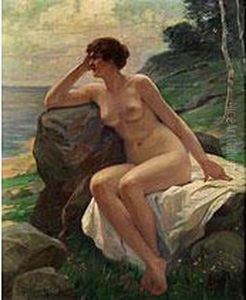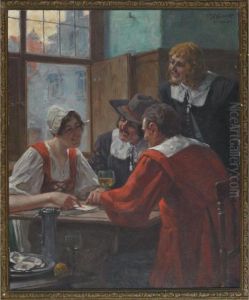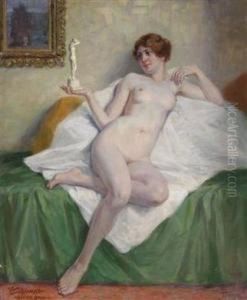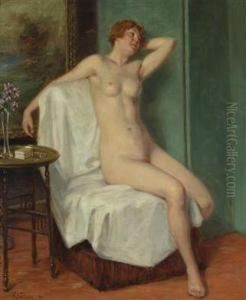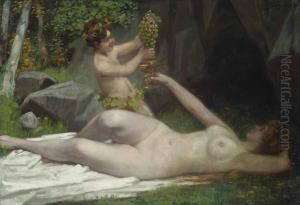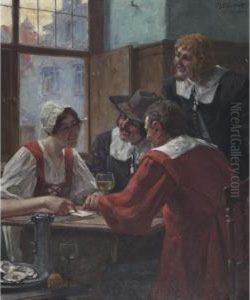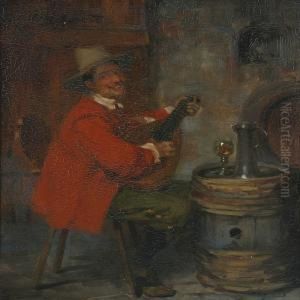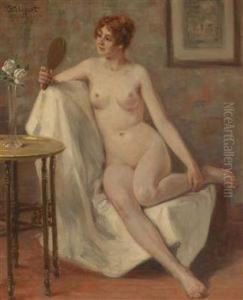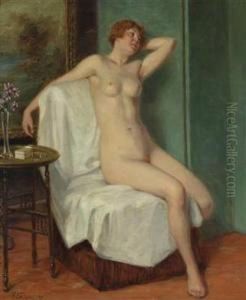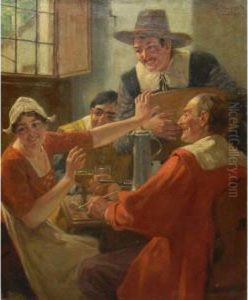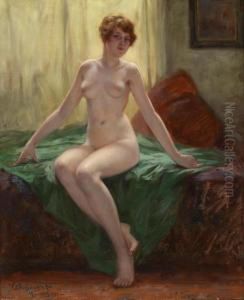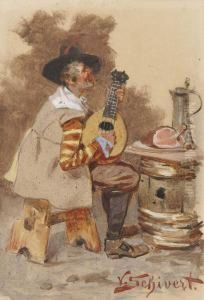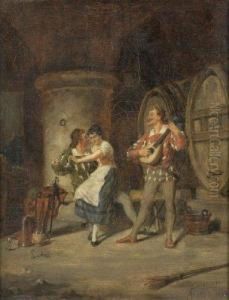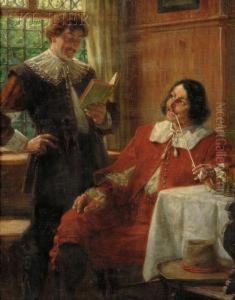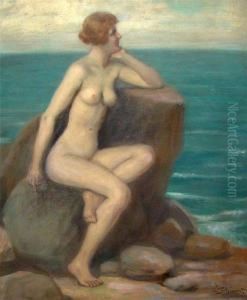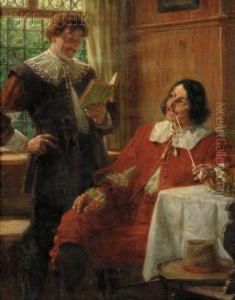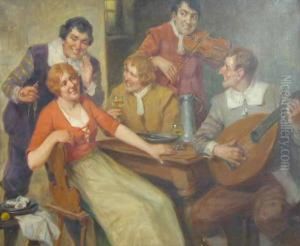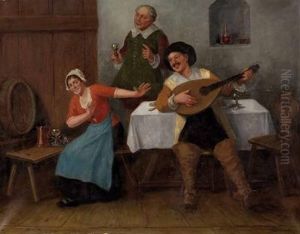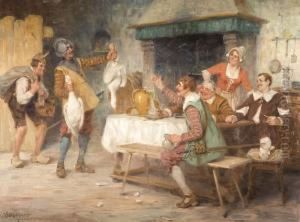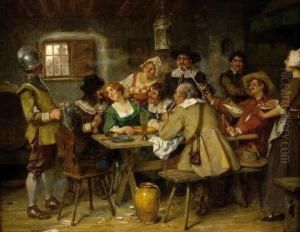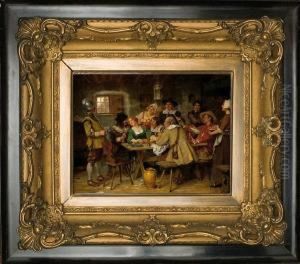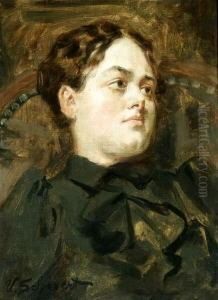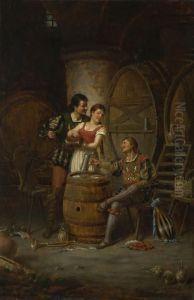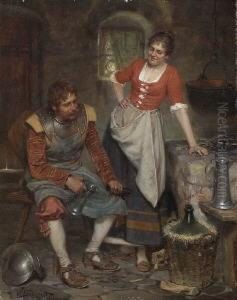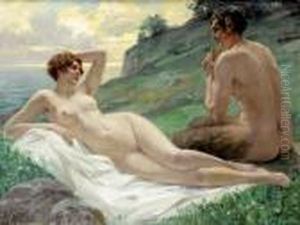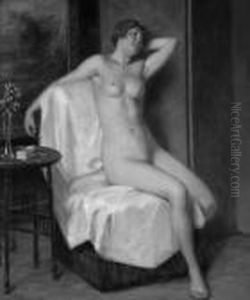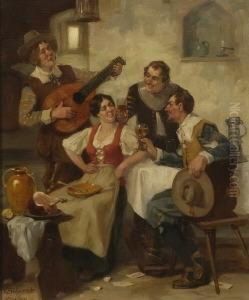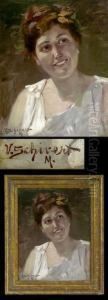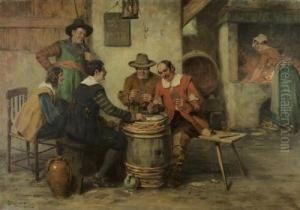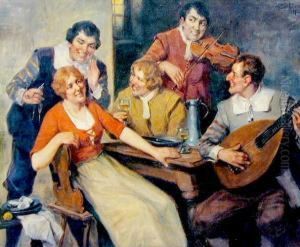Viktor Schivert Paintings
Viktor Schivert was a Romanian painter and illustrator, known primarily for his historical and battle scenes, as well as for his portraits. Born on October 31, 1863, in Timișoara, which at the time was part of the Austro-Hungarian Empire and is now in Romania, Schivert displayed an early talent for art, which led him to pursue formal education in the field.
He studied at the Academy of Fine Arts in Munich, Germany, which was a popular destination for many artists from the Austro-Hungarian Empire seeking to refine their craft. Schivert's time in Munich was instrumental in shaping his artistic style, infusing it with the academic rigor and attention to detail that characterized much of 19th-century European art.
Schivert's work often reflected his deep interest in history, particularly the military and cultural history of Romania and Central Europe. He became well known for his dramatic representations of battles and historical events, where he showcased not only his skill as a painter but also his ability to capture the essence of the moments he depicted. His paintings were characterized by their dynamic composition, vibrant color palette, and the meticulous depiction of historical costumes and details.
In addition to his historical scenes, Schivert was also a proficient portraitist. He painted numerous portraits of notable figures of his time, which were appreciated for their realism and psychological depth. His ability to capture the character and stature of his subjects earned him commissions and recognition.
Despite his success, Viktor Schivert remains a somewhat lesser-known figure in the broader context of European art history. His works, however, are still of interest to those studying the art and history of Romania and the Austro-Hungarian region. Schivert's paintings can be found in various museums, galleries, and private collections, and they continue to be studied for their artistic merit and historical significance.
Viktor Schivert passed away on April 6, 1927, in Bucharest, Romania. His legacy is preserved through his artworks, which continue to be appreciated by art historians and enthusiasts for their contribution to the cultural heritage of Romania and the depiction of European historical scenes.
